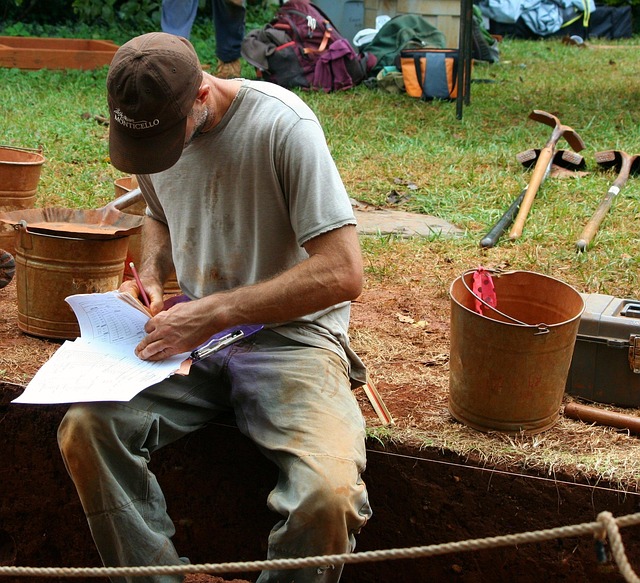UK Children's Literature Translation Services bridge cultural gaps, ensuring diverse stories from around the world resonate with young UK readers. By preserving narrative essence, adapting for age-appropriateness, and maintaining ethical standards, these services foster global literacy and appreciation for different cultures through children's literature. This booming market relies on professional translators to deliver high-quality translations that captivate and educate international audiences.
In the vibrant world of UK children’s literature, ensuring quality translations is paramount. This article delves into the essential aspects of translating children’s books, from understanding cultural nuances and leveraging native language expertise to implementing robust quality assurance processes. We explore age-appropriate content adaptation, collaboration with authors and illustrators, evaluation metrics, ethical considerations, and market trends driving demand for top-tier UK children’s literature translation services.
- Understanding Cultural Nuances in Children's Literature
- The Importance of Native Language Expertise
- Quality Assurance Processes for Child-Friendly Translations
- Age-Appropriate Language and Content Adaptation
- Collaboration with Authors and Illustrators
- Evaluating Translation Accuracy and Readability
- Ethical Considerations in Children's Book Localization
- Market Trends and Demand for UK Children's Literature Translations
Understanding Cultural Nuances in Children's Literature

Children’s literature is a rich and diverse field, with each culture bringing its unique perspectives and storytelling traditions to the page. When translating children’s books for a global audience, understanding cultural nuances is paramount. What resonates in one culture may not have the same impact or meaning in another. For example, UK Children’s Literature Translation Services must be sensitive to local idioms, references, and even humor, ensuring that the essence of the original story is preserved while adapting it for new readers.
This cultural awareness goes beyond language; it involves recognizing and translating not just words but also metaphors, symbolism, and cultural values. Translators play a crucial role in bridging this gap, ensuring that UK children’s literature retains its charm and integrity when shared with young readers worldwide. This meticulous approach guarantees that the stories not only communicate effectively but also foster an appreciation for diverse cultures, making them accessible and meaningful to a global audience.
The Importance of Native Language Expertise

In the realm of UK children’s literature translation services, harnessing native language expertise is paramount. The ability to tap into a translator’s profound understanding of both the source and target languages ensures that nuances, cultural references, and literary devices are accurately conveyed, preserving the essence and charm of the original work. This is particularly critical in children’s literature, where subtle elements like wordplay, rhythm, and imagery can significantly impact young readers’ engagement and comprehension.
A seasoned translator with a keen eye for detail and a deep connection to both cultures can navigate the challenges of translating literary works for children effectively. They not only bridge the linguistic gap but also foster an appreciation for diverse cultural narratives, thereby enriching the reading experience for young audiences in the UK.
Quality Assurance Processes for Child-Friendly Translations

Ensuring quality in children’s translations involves robust Quality Assurance (QA) processes tailored to meet the unique needs of child-friendly content. UK Children’s Literature Translation Services often employ multiple checks and balances to guarantee accuracy, readability, and cultural appropriateness. This begins with a meticulous review process that scrutinises every aspect, from grammatical correctness to age-appropriate vocabulary. Expert translators and native speakers work in tandem to ensure the translation not only conveys the original meaning but also resonates with young audiences.
Furthermore, feedback loops involving stakeholders like educators, parents, and children themselves play a vital role. Pilot testing and focus groups help identify potential issues, ensuring that the final product aligns seamlessly with the target audience’s expectations. These QA measures are essential for creating translations that not only maintain the integrity of the original work but also spark imagination and engagement in young readers across the UK.
Age-Appropriate Language and Content Adaptation

When translating children’s literature, ensuring age-appropriate language and content adaptation is paramount. Translators must consider not only the target audience’s linguistic proficiency but also their developmental stage. UK Children’s Literature Translation Services often employ native speakers with a deep understanding of childhood development to capture the nuances of the original text while making it accessible and engaging for young readers.
This involves choosing words, phrases, and sentence structures that resonate with the intended age group. Translators must also adapt illustrations and conceptual metaphors, as what may be culturally relevant in one context might not translate well into another. A successful translation should preserve the essence of the story while making it meaningful and enjoyable for children in the target market.
Collaboration with Authors and Illustrators

Collaboration between translators, authors, and illustrators is a vital aspect of delivering high-quality children’s translations. When working with UK Children’s Literature Translation Services, engaging these professionals in a collaborative process ensures that the essence and intent of the original work are preserved. Translators should consult closely with authors to understand their vision for the story, character motivations, and any unique cultural references.
Illustrators play a crucial role by providing visual context and enhancing the storytelling experience. By working together, these creative minds can adapt the text and illustrations seamlessly, ensuring that the final product resonates with young readers while maintaining the original quality standards. Collaboration fosters an environment where ideas are exchanged, potential challenges are identified, and solutions are co-created, ultimately resulting in a superior translation for children’s literature.
Evaluating Translation Accuracy and Readability

Evaluating translation accuracy is a critical aspect of ensuring quality in children’s literature. When it comes to UK Children’s Literature Translation Services, professionals must go beyond simply rendering words from one language to another. They need to understand the nuances and cultural references within the original text to convey its intent and meaning precisely. This involves meticulous attention to detail, including capturing the rhythm and flow of the narrative, preserving essential literary devices like rhymes or alliteration, and ensuring that any specialized terminology is accurately translated for the target audience.
Readability is another key metric. Children’s books are designed to engage young minds, often with simpler language and more direct storytelling compared to adult literature. Translators must adapt the text to maintain this accessibility while respecting the source material’s integrity. This can involve simplifying complex sentences, choosing age-appropriate vocabulary, and even adapting cultural references to make them more relatable for readers in a different linguistic and cultural setting. The goal is to create a translation that not only accurately represents the original work but also captivates young readers in the UK market.
Ethical Considerations in Children's Book Localization

When localizing children’s books for the UK market, ethical considerations are paramount. The process involves more than just linguistic translation; it entails capturing the essence and cultural nuances of the original story while adhering to the values and standards cherished by young British readers. This includes respecting the original author’s intent, preserving key themes, and ensuring that translations are age-appropriate and inclusive.
UK Children’s Literature Translation Services must also be mindful of potential biases in the source material. Careful selection of translators who understand both the source culture and British values is crucial. Additionally, reviews and consultations with experts in children’s literature ensure that the translated work maintains its integrity and resonates with young readers in the UK, fostering a love for reading while upholding ethical standards.
Market Trends and Demand for UK Children's Literature Translations

The market for UK children’s literature translations is thriving, driven by a growing global demand for diverse and culturally relevant storytelling. With an increasing number of authors and publishers seeking to expand their reach beyond traditional borders, professional translation services have become indispensable. The trend highlights a rising appetite for quality adaptations that capture the essence of the original work while catering to international audiences.
This surge in popularity is particularly evident in the UK, where children’s literature has a rich heritage and global appeal. As a result, there’s a constant need for skilled translators who can handle the nuances of language and cultural subtleties, ensuring that these translated works maintain their original charm and educational value. The demand underscores the significance of professional translation services in the UK children’s literature sector, fostering global connections while preserving literary excellence.
Ensuring quality in children’s translations is paramount to preserving cultural nuances, engaging young readers, and fostering global appreciation for UK children’s literature. By integrating native language expertise, robust quality assurance processes, age-appropriate content adaptation, and collaboration with authors and illustrators, translators can deliver accurate, readable, and ethically sound adaptations. Meeting these standards not only satisfies market demand for UK children’s literature translations but also enriches diverse global audiences with compelling stories that resonate across cultures.
